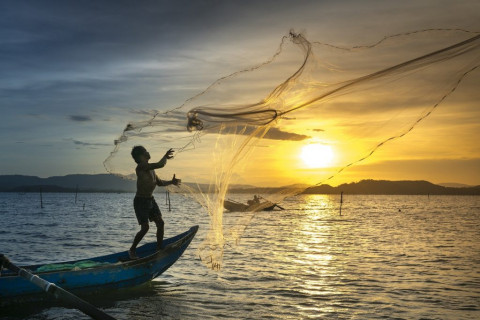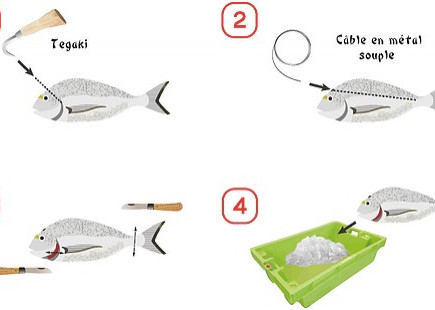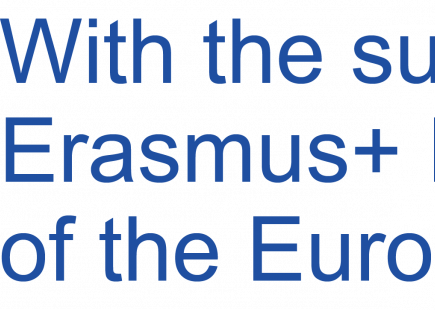Ideas into movement
Boost TNI's work
50 years. Hundreds of social struggles. Countless ideas turned into movement.
Support us as we celebrate our 50th anniversary in 2024.

Fish auction markets, or ‘halles à marées’, are fundamental public players on French coastal areas. They enable small-scale and industrial fishing professionals to sell and buy the day's catch. Some of them, such as the one in the French port city of Quiberon, Brittany, have adopted their own strategy to compete with larger fish markets. The Quiberon fish market has chosen to distinguish itself by selling live fish and applying the Japanese slaughtering method called ikejime. Initially implemented for economic reasons, this strategy now seems to offer some of the key characteristics of more sustainable fishing.

In France, small-scale fishing is constantly being pushed to increase its production in order to be economically viable. But it also plays other roles, as summarised by Didier Gascuel, director of the Fish, Sea and Coastal Unit at the University Agrocampus Ouest: “What is the purpose of the fishing sector in a country like France? If it's only for producing animal protein, then the most economically efficient model is to have a small number of large fishing boats. This is the model chosen by some northern European countries. In France and southern Europe, fishing is used to keep coastal areas alive. Without fishing we would be confronted with an economic desert.” Artisanal fishing keeps coastlines afloat, but it faces significant competition from highly efficient industrial fishing techniques.
According to the EU Fleet Register, in 2020, vessels of less than 12 metres using passive fishing gear - thus falling within the definition of artisanal fishing, as defined by the organization, Bloom - represent 70% of the French mainland fleet. However, they only landed 14% of their catches in volume and 22% in value in 2017. The introduction of factory ships, which go to sea for several weeks without returning to shore thanks to their unprecedented on-board storage capacity, explains much of this imbalance. The fishing volumes landed by industrial fishing companies drive prices down and force small-scale fishers to constantly increase their production in order to make a decent living from their activity. All the boats selling at the Quiberon fish market measure between 6 and 13 metres and therefore fall under the ‘small-scale fishing’ category, which means they all have to deal with the same constraints caused by rising volumes and falling prices in the sector.
Some actors have engaged in an alternative economic model, advocating for ‘fishing less and better’. This is the case of the Quiberon city fish auction hall. Since 2015, its strategy has been to increase the quality and price of fish products and to specialize in the sale of high-end fish. The fish is kept in prime condition to be sold alive and then slaughtered by the buyer according to the ikejime method, or sold already slaughtered in the same way. This initiative emerged in response to a strong demand from a large number of Japanese gourmet restaurants in France.
Ikejime fish is a fish that is slaughtered using a traditional Japanese technique and then left to mature for several days. This process produces extremely tender flesh and allows the fish to be stored for up to twenty days in a cool place.
In Japan, where most quality fish are slaughtered by this method, ikejime is said to have originated from a Buddhist view of how animals should die. They should suffer as little as possible while being valued as much as possible. Joseph Melin, a reporter who accompanied a young fisherman based in Quiberon practicing the ikejime method, defines it as follows: “Less cruel, less painful and less stressful, the ikejime method consists in killing the fish instantly and neutralising its nervous system along the spine. The nerve impulses no longer flow through to the flesh, which does not receive the information of death. The inevitable natural process of death is considerably delayed. (...) The flesh of ikejime fish preserves better and is superior in taste.” Image 1 details the different stages of ikejime slaughtering and the tools involved.

#2: Câble en métal souple = flexible metal cable
First, the tegaki (metal hook) punctures the animal's brain. Then a metal cable inserted between the head and tail is used to destroy the spinal cord. Finally, the fish is bled and kept at 0-2°C. The fish are therefore slaughtered one by one to meet the precision requirements of the method, which is very time consuming. To support fishers in this quality approach, the fish market has invested in training since 2015 by bringing in Japanese ikejime masters.
Large tanks have also been installed to keep the fish alive once it is landed and before it is slaughtered either by the fisher or the buyer.
The Quiberon fish auction is the first one in France to have adopted such a strategy as well as the only one among the thirty-four French fish auction halls to date to make its facilities available to fishers. This is mainly due to its status as a public fish market: unlike the majority of French fish auctions, which are managed by the Chambers of Commerce and Industry (CCI), Quiberon’s fish auction is managed by the Quiberon community of municipalities with former fishers sitting on the municipal council. This largely contributed to the implementation of such a strategy.
Since the beginning of the initiative, a dozen fishers trained in Quiberon have been delivering on-board or on-shore ikejime-slaughtered fish. Yet, it accounted for no more than 0.5% of the slaughtered volumes passing through the fish auction in 2018 and 2% in value. These volumes and value increased gradually between 2015 and 2018, before falling for reasons detailed below. In 2020, volumes were at their lowest due to the impact of the Covid-19 crisis, which greatly slowed down the restaurant business, the main buyers of ikejime-slaughtered fish.
First, the method helps distribute the economic benefits of fish sales to small-scale and coastal fishers. By positioning part of its sales in a niche market, the main objective of the Quiberon fish auction hall was to increase its sales value. As a public body, the fish auction benefits from state funding, but it must also find its own funding sources. It applies a 3% tax to all auction sales, increased to 7% when the fish has passed through the fish tanks provided by the fish auction hall. The selling price of live fish or ikejime is on average 25-30% higher than that of conventionally slaughtered fish (for the same type of so-called ‘noble’ fish); for more common fish (e.g. horse mackerel) the price can be multiplied by up to six.
It is therefore on this type of usually less valued fish that the added value is the highest. The increase in income generated directly benefits the fishers as well as the auction house. Negotiations are underway to ensure that the auction house tax does not rise above 3% even if the fish goes through the fish tanks. As fishers argue, the increase in the selling price is sufficient to increase the auction house's income. While the selling prices of ikejime-slaughtered fish are certainly higher, slaughtering one's entire catch through the ikejime method is not feasible due to the time it requires.
Fish that is not ikejime slaughtered but that has been line-caught and is considered to be of high quality can be promoted in other ways, such as through the ‘Ligneurs de la Pointe de Bretagne’2 label. This initiative is complementary to that of the Quiberon fish auction in promoting fishery products.
Another factor contributing to a better distribution of added value in the supply chain of live or slaughtered ikejime fish is the fact that it is mostly sold in short circuits. This is primarily due to the need to maintain optimal quality: the fewer hands it passes through, the more traceable it is and the more controlled its preservation conditions will be. Secondly, it is technically and economically difficult to transport live fish: in 2016, the Quiberon fish auction hall attempted and failed to export live fish tanks to Monaco and Dubai. Indeed, the cost of transporting the necessary volumes of seawater makes little economic or environmental sense.
The training cost of the ikejime method is significant, since it requires changes in practices, with uncertain results in the first years. The use of the technique requires experience and skill, but also the customers' lasting confidence. Fishers who decide to engage in ikejime cannot therefore do so for mere economic reasons: they will have to train themselves without having any guarantee of a rapid increase in income in the first few years.
Consequently, in order to use in the ikejime approach, the fishers must first seek to change the connection they have with their profession: by adding value to what they fish, by training themselves in challenging techniques, they effectively enhance the value of their occupation. Moreover, through this approach, another relationship of trust is established between the fisher and his/her customers, who turn to that particular professional in recognition of the quality of his /her work. This strengthens social ties in a profession that is often considered to be solitary.
From an ethical point of view, ikejime also implies a different relationship with nature. According to Erwan Ranchoux, a fishmonger and ikejime promoter in France, "economic motivation cannot be the only motivation that drives fishers who turn to ikejime. They must commit to the underlying philosophical dimension of respect for the fish that goes with it."
This is achieved through the time given to each fish and the reduction of animal suffering. In their book on eco-ethology, Jacques Bruslé and Jean-Pierre Quignard point out that "the sensitivity of fish to stress has been admitted and demonstrated, but the question of whether fish are sensitive to conscious pain has long been debated and is still subject to speculative discussions. (...) In France, the Civil Code (Article 515-14) has recognised since January 2015 that animals, and therefore fish, are 'living beings endowed with sensitivity.'">
In France, the question of animal welfare has been a subject of research and ethical controversy for several decades. Although in the case of fish processing the focus is on farming conditions, the question also arises for fish caught in the open sea. The ikejime slaughter method was developed in Japan mainly to help reduce animal suffering. The fish must be kept alive once it has been caught, in order to give it time to reduce its stress for several hours in the tank before being slaughtered in a few seconds, avoiding the traditional asphyxiation and agony in the trawl, the net or on the deck of the boat.
This combination of economic, social and ethical factors explains why some fishers are turning to ikejime and are proud to use it. By being more in line with environmental and ethical considerations of animal welfare, valuing fishing through seeking new relationships (to the fish, to the market, etc.) and higher quality can foster the development of new generations of fishers.
In addition, the ikejime slaughter method is particularly suitable for small-scale fisheries, as it requires little equipment: a fish tank on board and two simple tools for slaughtering. It also requires special care to ensure that the fish is taken out of the water in the best possible conditions and kept alive until it is slaughtered. Such care is not possible in today's industrial fishery, which focuses on large volumes and brings injured or dead fish on board. The ikejime method is therefore a way of enhancing the value of fish which industrial fishing cannot replicate. From this perspective, ikejime represents a tool for distinguishing artisanal fishing, which can be an asset for ensuring its place on French coasts.
The Quiberon fish auction’s approach has inspired a few other initiatives in France, such as the Valdora project (Valorisation of sea bream caught in ponds), which involves the sale of live fish in the pond of Thau, or the Saint-Jean-de-Luz-Ciboure fish auction (which has organised visits to Quiberon). Nevertheless, the Quiberon fish auction is still the only one in France to offer live fish for sale and to support fishers with specific training and equipment. Several factors explain the difficulty of scaling up this innovation.
Ikejime has obvious economic, social and societal interests, in relation to the maintenance of small-scale fishing and a better distribution of the added value for artisanal fishers. Yet the environmental interest of ikejime is more difficult to demonstrate. It can be intuitively argued that a fisher who makes better use of his/her catch will tend to fish less and therefore exert less pressure on the available fish stocks. On the other hand, according to Didier Gascuel, “regulating fishing with a luxury product runs the risk of multiplying the number of actors coming to fish it.”While all fish are theoretically suitable for slaughter using this ikejime method, in reality only a small number of species are actually valued through ikejime. These are sea bass, turbot, pollack, sea bream and bluefin tuna, which are the 'noble' fish for which demand is the greatest. The added value of ikejime slaughter could increase the fishing of these species and cause additional pressure on the resources. No other environmental aspects of ikejime can be proposed in this study and no research is yet known regarding this technique. The undoubtedly limited environmental impact is therefore not a relevant argument to defend a larger scale or the development of fishing enhancement through ikejime, in a context where the reduction of fishing pressure is key to what is considered as a sustainable fishing practice.
Beyond the environmental issue, one of the main limits to the spread of ikejime is the lack of a governance framework. There is indeed a best-practice guide, drawn up on the initiative of the Morbihan departmental fisheries committee, but no external control over compliance. There are currently no specific regulations for ikejime and each fisher is free to use the method according to his/her own knowledge and skills. Fishers themselves affix a label to their fish showing that the latter have been slaughtered according to the ikejime method. No control is carried out on the use of the label. This has led to abuses that have had an impact on the Quiberon fish auction’s sales of ikejime fish from 2019 onwards: some fish were inappropriately sold as ikejime which has affected the reputation of both the method and the fishers involved. Demand consequently dropped at the time. Some mareyeurs or fishmongers have since chosen to favour the purchase of live fish that they slaughter themselves using this method to guarantee the permanent quality of the fish.
In 2020, in order to restore the image of ikejime, the Quiberon fish auction hall joined a working group - recently transformed into an organization - which is looking into structuring the sector, notably through the introduction of a reference system that would gradually lead to creating a label. In addition, to further develop its strategy of selling live or ikejime-slaughtered fish, the fish market has decided to make use of funding granted in early 2021 by the European Maritime Affairs and Fisheries Fund (EMAF). These funds will help install new fish tanks and build an ikejime workshop with sufficient tools and working space to slaughter the fish on site. The budget should also cover the opening of an ikejime manager position at the fish auction hall and additional training for fishers to improve their practices. All these investments should encourage fishers to slaughter their fish on land rather than at sea, as is the case for 95% of ikejime sales at the fish market at present. Land-based ikejime gives the fish more time to release the stress of the catch and allows for more precision in the technique.
Ikejime is a technique currently practised by only forty or so fishers in France, and its products are aimed at a niche market, due to the high price and technicality required. Covering a wider consumer market and making this high quality fish accessible beyond elite buyers therefore seems difficult. On the other hand, this technique helps rethink the different dimensions (ethical, environmental, professional) of fishing that could be part of the ongoing transition to more sustainable fishing. Although this notion has not been defined in an institutional manner, it may be intuitively considered that a more sustainable fishery should include the following aspects, as proposed by the ikejime method: a better distribution of the added value benefiting the fishers, improved working conditions through reduced time spent at sea, an enhanced status of their profession and a reduction in animal suffering. If suitably monitored, the ikejime method could become one of several initiatives allowing the interests of small-scale fishing to be defended. Other initiatives taken by the Quiberon fish auction go along the same lines: a better structuring of professional fishing on foot and an improved (more meticulous, more careful) management of scallops in the Quiberon bay. More broadly, the ikejime method confirms the advantage for artisanal fishers to opt for quality rather than landed volumes if they want to sustainably continue their activity, which is so strongly threatened by other forms of catching and processing fish resources.
